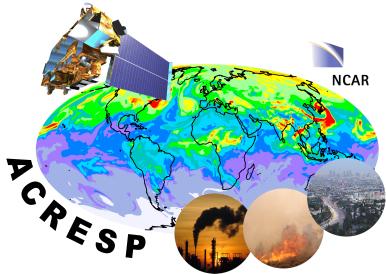
Scientific Highlights
Remote Sensing & Tropospheric Modeling
A notable ACD achievement of the past few years has been the close collaboration between the MOPITT group working on tropospheric pollution remote sensing and the MOZART modeling group. This has promoted scientific utilization of the satellite data both within NCAR and in the broader community.
Other Highlights
- Chemical OSSEs: ACD employs chemical Observing System Simulation Experiments (OSSE) to help define quantitative measurement requirements for satellite missions and to evaluate the expected performance of proposed observing strategies.
- MOZART-4 ozone for MIRAGE: NCAR's Model for Ozone and Related Chemical Tracers, version 4 (MOZART-4) has been used to quantify the ozone produced by emissions from the Mexico City metropolitan area (MCMA).
- Long-Range Transport of Pollution: Examination of the impact of localized emissions on larger scale air quality including intercontinental transport.
- Development of Data Assimilation Techniques: Advances in data assimilation of satellite trace gas measurements into chemical transport models.
- Improvement of Emissions: Using inverse modeling of satellite measurements to constrain surface fluxes and assess the accuracy of current inventories.
- Investigations of Tropospheric Chemistry: Integration of satellite observations and modeling to investigate tropospheric ozone production.
- Quantifying Seasonal and Inter-Annual Pollutant Variability: Multi-year global satellite datasets and modeling can be used to examine drivers such as fire emissions that vary year-to-year according to climatic conditions that affect rainfall and vegetation drying.
- Field Campaign Support: Near real time MOPITT CO data for flight planning.
